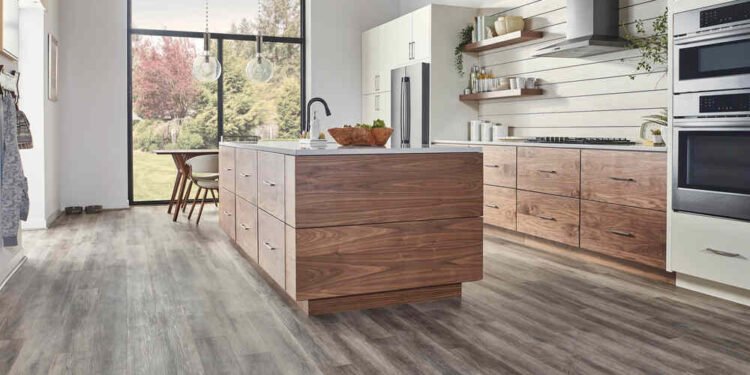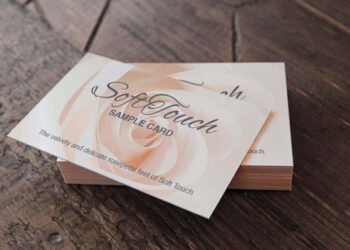Every detail of a retail space contributes to the overall shopping experience, and flooring is no exception. The right floor sets the tone of your shop, influencing how customers perceive the brand and how comfortably they move through the space. Among the most popular choices for commercial settings are vinyl and laminate flooring, both of which have evolved significantly in recent years. Each material offers a distinct blend of practicality, style, and affordability — but when it comes to shop flooring, choosing between them isn’t always straightforward.
The Role of Flooring in Retail Design
Flooring does far more than cover the ground. It forms the foundation of a shop’s aesthetic, affects acoustics, determines how light interacts with displays, and must withstand constant foot traffic. In high-footfall environments like retail stores, the flooring must be resilient, easy to clean, and safe underfoot while maintaining a polished, professional appearance.
Whether it’s a sleek, modern boutique or a rustic local shop, the flooring must complement the design concept while being functional enough to handle daily wear and tear. Vinyl and laminate have both become leading contenders in the commercial flooring market because they deliver this balance — but the differences between them are worth understanding in detail before making a choice.
What Makes Vinyl Flooring So Popular?
Vinyl flooring has come a long way from the sheet vinyl of decades past. Modern options, including luxury vinyl tile (LVT) and vinyl planks, offer exceptional realism, mimicking natural materials like wood, stone, and concrete with remarkable precision. The surface layers are designed to resist scratches, stains, and water, while the resilient core provides comfort underfoot and noise reduction — two qualities particularly valuable in a retail environment.
One of the key strengths of vinyl flooring is its versatility. It can adapt to a wide range of designs and layouts, from traditional high-street shops to modern department stores. The material’s flexibility also means it can be installed seamlessly in awkward or irregularly shaped spaces without disrupting the visual flow of the room.
Because vinyl is inherently water-resistant, it performs well in shops where spills are common or where regular cleaning is necessary. It’s also softer than laminate underfoot, which helps to reduce fatigue for staff who spend long hours standing behind counters or walking the floor. Its resilience makes it a practical option for busy shops that value both aesthetics and comfort.
Laminate Flooring: Stylish and Hardwearing
Laminate flooring has long been valued for its authentic wood-look finishes and affordability. Constructed from layers of compressed fibreboard with a high-resolution photographic image on top, laminate provides a realistic imitation of natural timber at a fraction of the cost. Over the years, technological advancements have improved the textures and durability of laminate, allowing it to compete closely with vinyl in both appearance and practicality.
Laminate floors are known for their rigidity, giving a solid, stable feel underfoot that many people find satisfying. They resist scratches and dents effectively, which makes them ideal for retail settings where trolleys, furniture, and footwear can all leave their mark. However, while laminate is highly durable, it isn’t completely immune to moisture. Traditional laminate can swell or warp if exposed to standing water, although newer water-resistant varieties have addressed this issue to some extent.
For retailers seeking an authentic wooden aesthetic without the maintenance demands of real hardwood, laminate remains a strong contender. It’s particularly popular in boutique shops, fashion outlets, and spaces where a warm, homely atmosphere is part of the brand experience.
Comparing Durability and Lifespan
When choosing flooring for a commercial setting, durability is often the deciding factor. Both vinyl and laminate can handle high levels of foot traffic, but they perform differently depending on the environment.
Vinyl’s composition makes it naturally resilient. Its multi-layered construction — typically including a wear layer, printed design, and flexible core — allows it to absorb impact and resist scratching. It’s less likely to chip or crack when heavy objects are dropped, and its water resistance makes it an ideal option for shops where cleaning happens frequently or where customers might track in rainwater.
Laminate, though harder, can be more brittle. The surface layer is robust and resistant to scratching, but if moisture seeps between the joints, swelling may occur. That said, modern water-resistant laminates perform far better than older types and can last for many years with proper maintenance.
In terms of lifespan, high-quality vinyl flooring can last up to two decades, while good laminate flooring can often last between ten and fifteen years. The difference is usually down to environmental conditions and the type of wear the floor experiences daily. For shops that expect constant heavy use, vinyl’s flexibility and moisture resistance often make it the longer-lasting option.
Maintenance and Practicality in Busy Shops
Ease of maintenance is another crucial factor in commercial flooring. Shops need floors that can be cleaned quickly without disrupting business operations. Vinyl excels in this regard. Its waterproof surface can be mopped with standard cleaning solutions, and spills can be wiped away immediately without risk of damage. The seamless installation options available with vinyl also minimise the spaces where dirt and debris can collect, keeping the floor looking pristine with minimal effort.
Laminate flooring requires slightly more care. It should be cleaned with a damp mop rather than a soaking wet one, as excessive moisture can seep through joints. However, it’s highly resistant to stains and can withstand regular sweeping and dry mopping with ease. In a retail setting where presentation matters, both flooring types perform well, but vinyl’s added tolerance to moisture makes it slightly more forgiving during busy cleaning routines.
Comfort and Acoustic Considerations
Customer comfort is a subtle yet powerful part of retail design. Hard, echoing floors can make a shop feel cold and uninviting, whereas surfaces that soften noise and offer slight cushioning create a more pleasant shopping experience. Vinyl flooring tends to absorb sound better than laminate, which is why it’s often chosen for stores that prioritise a calm, welcoming atmosphere.
The softer texture of vinyl also provides greater comfort underfoot. This can make a noticeable difference for both customers browsing for extended periods and employees who stand for hours. Laminate flooring, being more rigid, may benefit from the addition of acoustic underlays to reduce sound and add some cushioning. While both can achieve good results with proper installation, vinyl generally performs better for comfort and noise control straight out of the box.
Design and Aesthetic Versatility
The appearance of a shop floor can make or break its first impression. Both vinyl and laminate offer an impressive range of finishes that replicate natural materials, from oak and walnut to marble and slate. Vinyl, particularly luxury vinyl tile, allows for intricate layout patterns such as herringbone or chevron, offering a high-end look that can elevate the entire space. The texture and realism of modern vinyl are striking, often indistinguishable from real wood or stone at a glance.
Laminate also offers beautiful visual effects, with high-definition printing and embossed textures that provide a convincing natural feel. It’s especially suited to retail spaces aiming for a warm, rustic, or classic wood look. Where laminate sometimes falls short is in flexibility — it’s typically supplied in rigid planks, meaning it doesn’t curve or adapt as easily as vinyl when fitted into irregular layouts.
From a design standpoint, vinyl’s ability to mimic a wide array of materials while offering flexibility gives it an edge in creative commercial projects. However, laminate’s authenticity and depth of grain make it a strong option for brands that want to achieve a specific wood-floor aesthetic.
Cost and Installation Factors
Budget considerations are always at the forefront of retail renovations, and both vinyl and laminate are affordable compared to natural materials like hardwood or stone. The overall cost depends on the type and quality of the flooring selected. Vinyl tends to vary more in price, with entry-level sheet vinyl being highly economical and luxury vinyl tile sitting at the higher end of the range. Laminate typically occupies the middle ground — often slightly cheaper than LVT but more expensive than basic vinyl sheets.
Installation can also influence the total cost. Laminate is usually installed using a click-lock system, which allows for quick and tidy fitting without adhesives. Vinyl, on the other hand, can be glued down or laid as a click system depending on the product type. Both are relatively straightforward to install, though vinyl’s flexibility makes it easier to work with around corners and obstacles.
For shop owners aiming to minimise downtime, laminate may have a slight advantage because of its fast installation. However, vinyl’s minimal maintenance and longer lifespan can make it the more cost-effective choice in the long term.
Sustainability and Environmental Impact
Sustainability is becoming an increasingly important factor for modern retailers. Both laminate and vinyl flooring have made strides in eco-friendly production, but they differ in materials and recyclability. Laminate is made primarily from wood by-products such as fibreboard, making it partially renewable. However, its resins and finishes can limit recyclability.
Vinyl, being a synthetic product, has historically faced criticism for its use of plastics. However, many manufacturers now produce low-VOC (volatile organic compound) and fully recyclable vinyl options, addressing environmental and health concerns. For shop owners committed to sustainability, researching the brand’s sourcing and production methods is key.
Eco-conscious options exist within both categories, and the decision may ultimately come down to balancing environmental impact with practicality. The flooring industry’s shift toward greener manufacturing means both materials can fit into sustainable retail projects when chosen carefully.
Which Flooring Is Right for Your Shop?
Choosing between vinyl and laminate flooring ultimately depends on the nature of the shop, the brand identity, and the practical demands of the space. Vinyl offers superior moisture resistance, comfort, and versatility, making it ideal for high-traffic or high-moisture environments such as cafés, convenience stores, and larger retail outlets. Laminate, on the other hand, provides a more traditional and authentic wood aesthetic, perfectly suited to boutiques, gift shops, or stores that emphasise warmth and texture in their design.
Both options are durable, attractive, and cost-effective, but their suitability hinges on the day-to-day realities of the retail space. A clothing store seeking elegance and acoustic comfort may lean towards vinyl, while a home décor boutique might prefer the charm of laminate.
The Final Word on Shop Flooring Choices
The debate between vinyl and laminate for shop flooring isn’t about finding a single winner — it’s about identifying which material aligns best with your brand, budget, and environment. Vinyl shines in versatility, comfort, and moisture protection, while laminate stands out for its authenticity, affordability, and tactile warmth. Each offers its own strengths, and both can transform a retail space into something inviting, functional, and reflective of your business’s personality.
In the world of retail design, the floor is one of the few elements every customer touches, even if only with their feet. Choosing wisely ensures not only a stylish first impression but also a long-lasting investment that supports your shop’s success for years to come.


















